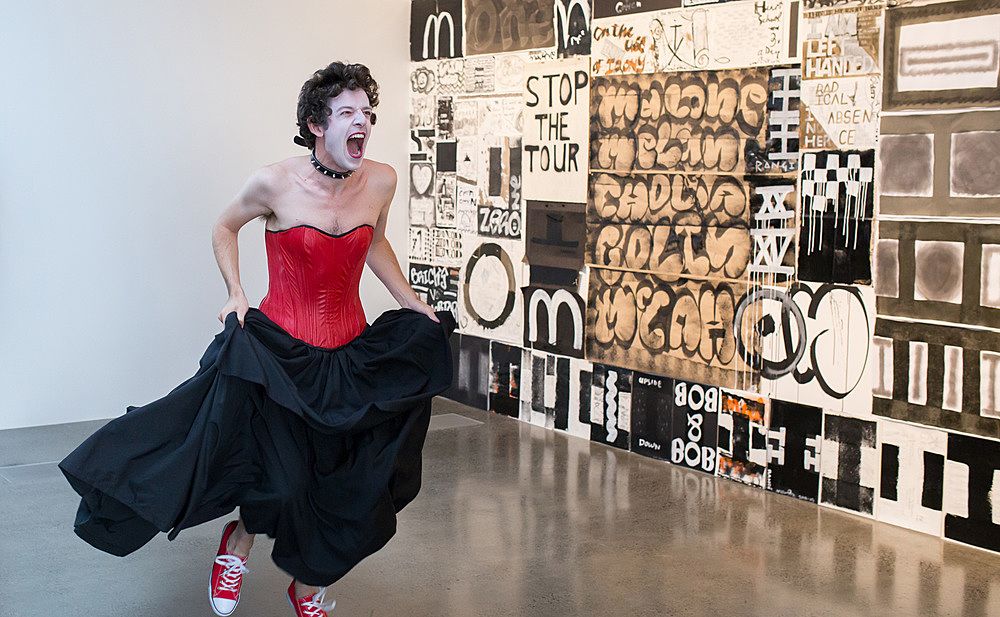Review: Dido and Aeneas: Recomposed
The first opera performed at The Basement Theatre aims for deconstruction, but a lack of accessibility prevents an understanding of what Dido and Aeneas: Recomposed is deconstructing in the first place.
The first opera performed at The Basement Theatre aims for deconstruction, but a lack of accessibility prevents an understanding of what Dido and Aeneas: Recomposed is deconstructing in the first place.
Editor's note: We commissioned this review after publishing this profile of Unstuck Opera, where Dido and Aeneas was framed within the broader context of the company wanting to create modernised, financially accessible work "that their friends would want to watch." We were interested and excited by the potential this implied: could this be a bridge for regular Basement Theatre-goers interested in trying opera for the first time? It's this question that underpins our Auckland Theatre Editor's review below.
I need to preface this by saying that my experience of opera is very limited. The only opera I’ve seen in full is Don Giovanni, and while I have a few Maria Callas recordings on my computer, neither my ear nor my eye is trained in opera. There are clichés that sail over my head, tropes I don’t recognise and a way of telling a story that is as mystical to me as it is mythical. So when I come into Dido and Aeneas: Recomposed, the first opera performed at The Basement Theatre which is as non-traditional a venue for opera as you can get, I want to see it, I want to understand it and I want to be engaged by it.
Both the performances and the music make a strong enough impression to carry even an uneducated audience throughout the hour. Alex Taylor’s music, recomposed and rearranged from Henry Purcell’s original, is exciting and lively. The singers and the band sound great, and it’s impressive that this is the case given the harsh acoustics of The Basement mainspace.
But even though the opera is in English, my ear isn’t trained enough to pick up on the classically-trained diction to comprehend it, so it’s like watching something in another language. I pick up words here and there, and I know the gist of the Dido and Aeneas well enough to understand the beats, but I end up relying on performance and music to understand where I am in the story.
Even with my limited knowledge of opera, I can feel Dido and Aeneas pushing against preconceptions of what opera is and perhaps should be. It’s stark and bare: there is no set, there is one lighting state and the performers are mere metres away from the audience. It feels like the show is saying, “We can make opera like this. We can make you feel as much as you do in a big-scale opera with only these things.”
Despite this, many of the things that Dido and Aeneas employs feel tired and strained, not necessarily for the genre but for the space.The use of only one lighting state gives the piece a remoteness that unpleasantly jars against the dynamism of Alex Taylor’s music; there are moments that could be highlighted, literally, or an atmosphere that could be created by the lighting that aren’t, and it feels like a huge missed opportunity.
The piece also moves the audience from the main theatre to the bar to the studio and back through those three spaces. While the change injects life into the piece, the process of moving between spaces kills the momentum dead. The movements feel less like transitions and more like forced intervals, and when the story picks up it doesn’t acknowledge the audience’s movement to a new space. It feels like a scene transition, except rather than actors or the set moving, the audience is moving instead. As accessible as The Basement is as a space for new work, and for introducing new audiences to work, it is not a space that can easily accommodate sixty people moving around it, and the work suffers because of it.
Moving around the space also prevents a true emotional connection with the piece. The moment we’re asked, or told to move, we disconnect with what’s going on in front of us and reconnect with the people around us, so the opera never really reaches out and grabs us.
It takes until the very end of the show for any emotion to be drawn out, when Amy Jansen’s Dido sings ‘Remember Me’, and for the first time it feels like we’re watching a person onstage feeling real emotions. She wipes away her stylised French Revolution-era makeup, she takes off her flower-dotted wig and strips down to blacks. In this moment, I feel what the show is trying to do, I feel it trying to make an artform relatable and human, and it succeeds here.
The rest of the show doesn’t quite meet that level. It’s hard to judge it as a piece of opera since I don’t have the critical tools or the knowledge to back it up, but as a show that’s on at The Basement, a show that is meant to be accessible to an audience that doesn’t go to opera, it feels like it’s only halfway there. It feels different from an opera, the only opera I’ve known, but it also feels like something that I can’t relate to or get anything from.
It’s an entertaining piece, and immensely pleasurable to listen to, but I struggled with connecting to why I was watching it. As an audience member who was ready to engage, ready to care and ready to learn, I didn’t feel like the piece was meeting me halfway. It is an admirable endeavour to subvert tropes and break cliches, but when an audience doesn’t understand what is being subverted and broken then you’re losing them.
This opens up the gulf between the two audiences of the show, which I could see even from where I was sitting. There was the audience who was engaged with it fully, who got it, and who I would wager are regular attendees of opera and classical music, and then there was the more casual Basement audience, who sat engaged but a bit bewildered. As much as the work might be trying to cater to the latter audience, it was bound by the constraints of the artform, which is inherently inaccessible both economically and culturally, and so it ends up being for the former audience. A deconstruction means nothing if you don’t understand the construction in the first place.
The entire experience is like watching a movie without subtitles. I can appreciate the beauty of it, and I can appreciate the work that went into it, but I don’t truly understand it and I can’t connect emotionally. It’s as much a result of my own lack of knowledge around the form as it is due to the show not meeting me halfway, as an audience member. If your goal is to be accessible, then be truly accessible, because the effort without the follow-through can exclude an audience even more.


